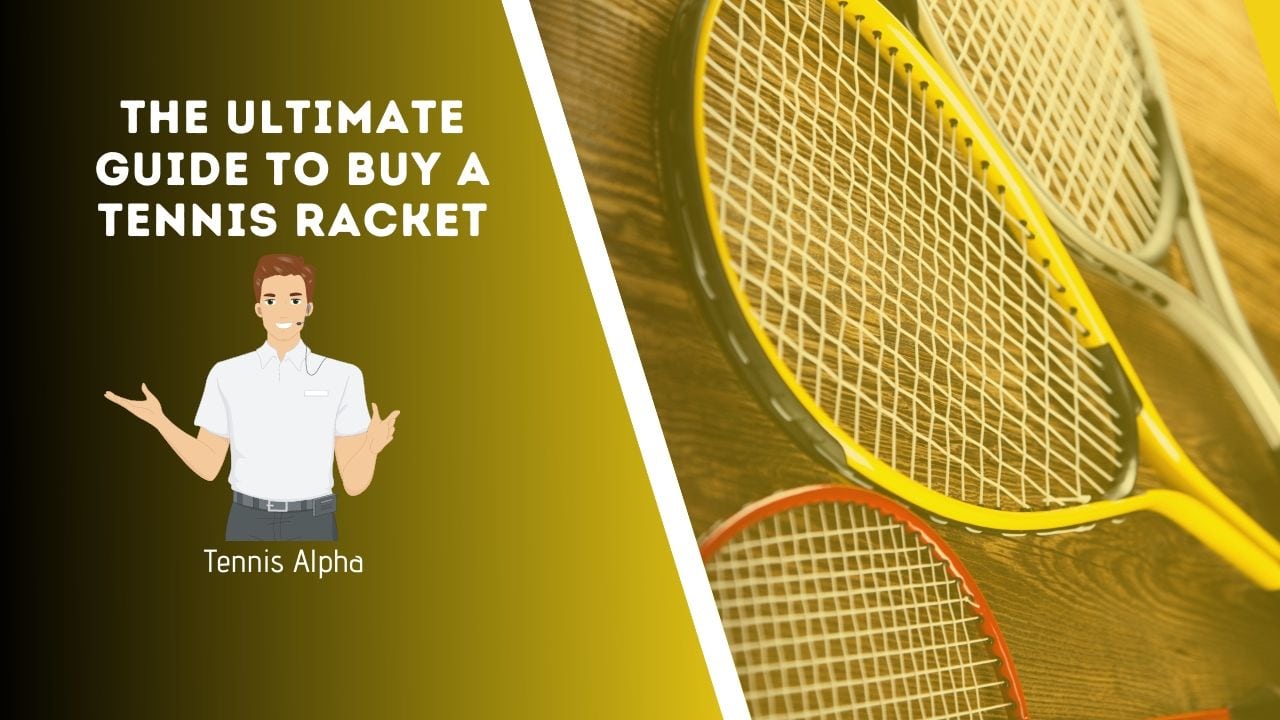
Well, this week, I have to tell you something that I’m actually kind of embarrassed about. I broke one of my tennis racquets, So what this means for me is to buy a new racquet
I didn’t really break it, but I definitely cracked the frame. And I wasn’t believing I had done that until I was actually using the racquet during a match.
In fact, I kept playing with that racquet and I played with it after that. But there was one day I was feeling a little off and I thought it just needed to be restrung, then that day I was standing there looking at it. I was like, oh, my gosh, I actually cracked my racquet.
So today we’re going to talk about everything you need to know about a tennis racquet so when you’re looking to buy your own racquet, you’ll know what the terminology is and you’ll better be able to choose the racquet that’s going to work for you.
Honestly, it’s not as complicated as I’m making it sound, but there is such a wide variety of racquets out there. You want to make sure you choose the best racquet for you. And that’s not necessarily the one that Rafael Nadal or Serena Williams is playing with.
It’s the racquet that meets your game best. So let’s get started with that whole discussion of what do you need to know to buy the best tennis racquet?
Tennis racquets Main Categories
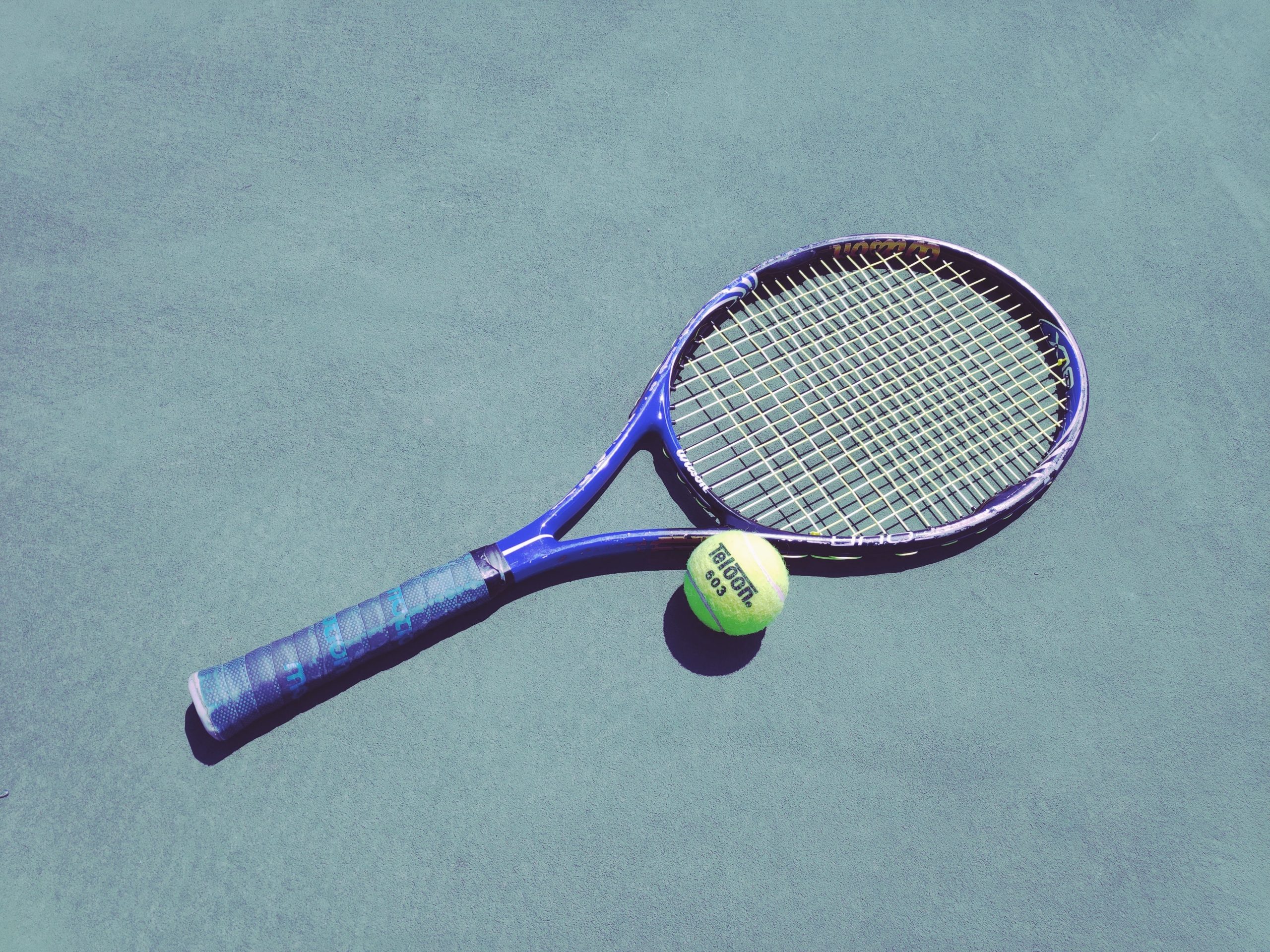
Well, when you’re starting out the selection process, the first thing you should know upfront is there are three basic types or categories of tennis racquets.
I guess most manufacturers and retailers use these same categories. You may find different terminology for each of these, but basically, if I tell you what the qualities of these different categories are, no matter what terminology you see, you’ll go, oh, it’s that kind of racquet.
Power racquets
The first category, which is probably the basic category that most people start to start in. Certainly, I will be looking for a racquet in this category.
And I would say beginners or women players who are maybe not as physically imposing.
They might start out looking in this category. It’s the category of power racquets.
Well, this is the type of racquet that, a player who has a shorter, more compact swing might use a player who wants to add power to their strokes or their serves.
A player looking for a racquet that might have a bigger sweet spot. So, therefore, it’s a more forgiving racquet in the sense of because the sweet spot is bigger.
You’re going to get less mishit. And up again, players with any type of I hate to call it a physical limitation, but smaller players.
Players of smaller stature. Women who maybe don’t have as much arm or upper body strength and players who are looking to improve their tennis game. Those all those types of players, usually they’re going to buy the racquet that works best for them in the power category.
Control racquets
The second category is control racquets. These racquets work best for players who’ve got Long or Lupi swing patterns.
Players, who are easily able to put power on the ball, whether they’re hitting strokes or serves. But they need more control over their racquet.
These kinds of racquets are also great for players who are taller, larger. That they don’t need as much of a racquet because they’ve got the upper body strength to add the power.
They need something to help them get that power under control, and that would be a control racquet.
These are also the types of racquets that advanced players buy, especially players who are pros on the tour using.
If you see that Roger Federer is using a certain type of racquet. You can bet it’s going to have the characteristics of a control racquet versus a power racquet.
Tweener racquets
The third major category is something that would be called a tweener racquet or an in-between racquet. And as you might guess, it’s something that’s in between the power racquet and the control racquet.
So this is the type of racquet that an intermediate player might choose. Also, it could be used by a player who’s transitioning from a power racquet towards a controlled racquet.
You see a lot of advanced junior players buying this type of racquet, players who as juniors used a junior-sized racquet and now they’re moving into an adult-sized racquet. So a tweener racquet often has the qualities that help them make that transition better.
It’s also a great racquet for a player who wants to put more spin on the ball because of the size and the spring string pattern.
This is the kind of racquet that a lot of players interested in doing that would go towards.
What characteristics to look for when buying a tennis racquet?
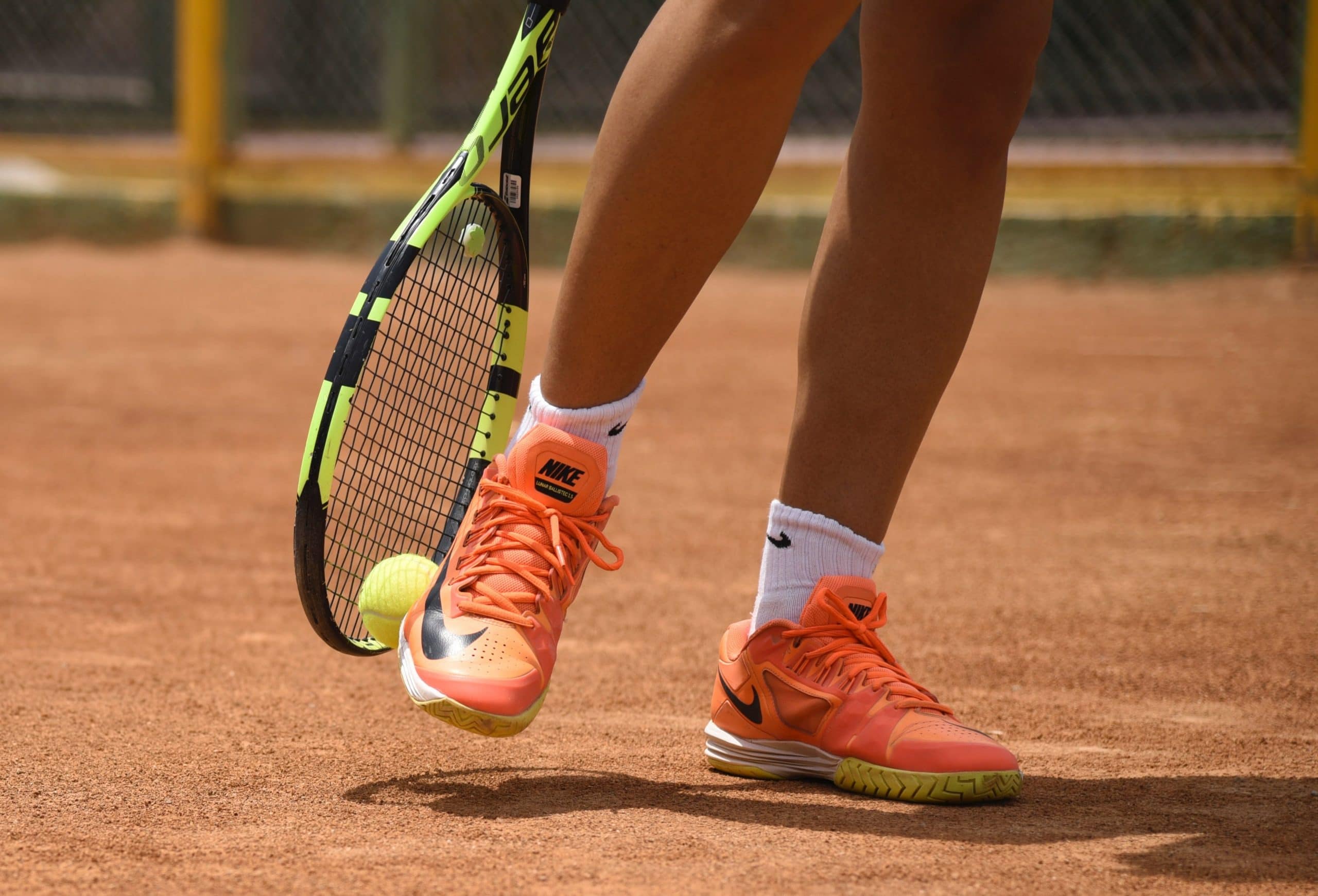
Now, within each of those categories, you’re going to find some characteristics, some variety that frankly, that’s what makes every racquet different.
So these qualities that we’re going to talk about now, they are common to each of those three main categories.
But you’ll see differences depending on what category of racquet you’re looking at.
You need to be able to either recognize when you’re reading about racquet’s or talking to a tennis pro or retailer about racquet’s is the head size.
Head size
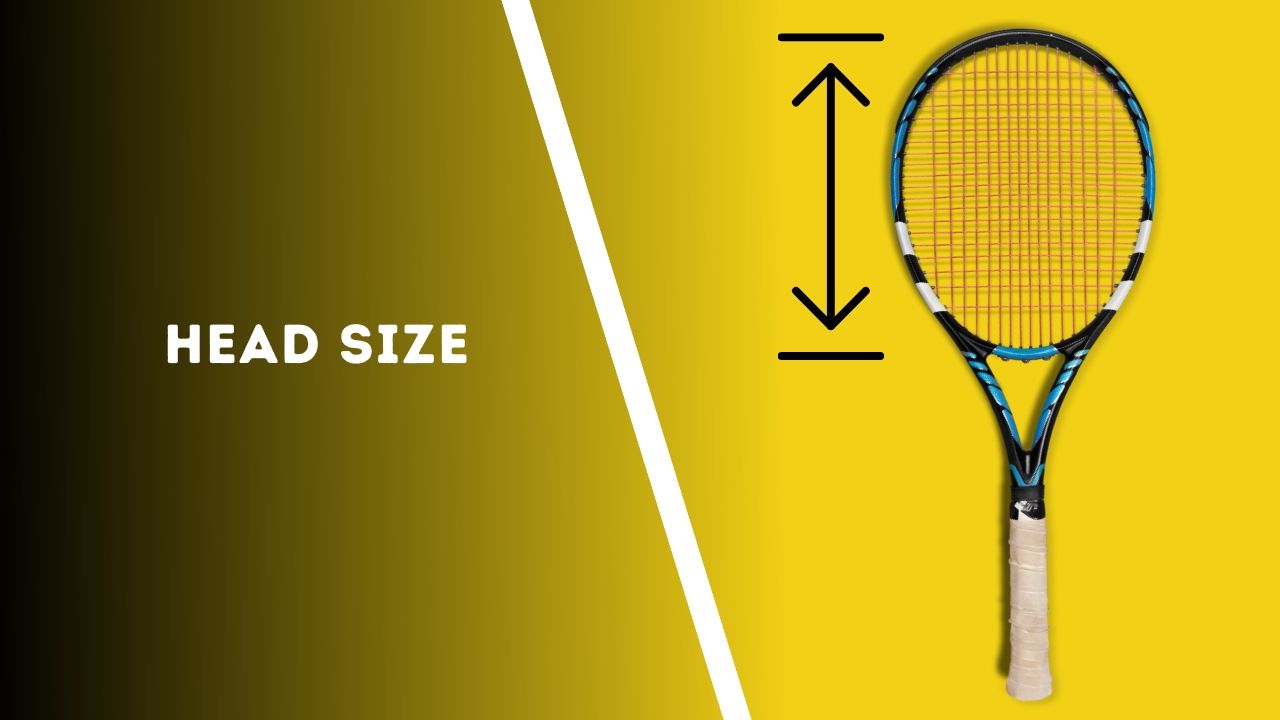
Head size is important in any racquet because head size is what can up the power on a racquet. The amount of power you can get from a racquet, a larger head size provides more power than smaller head size. All other things being equal.
In fact, you’ll see that some manufacturers have certain models of racquets that everything about the racquet in that particular model line will be the same except the head size. It will increase a couple of inches in each of the different styles within that model.
The nice thing about a large head size is that it means you have a larger sweet spot. So you have more forgiveness when you mishit the shot. In other words, if you don’t hit right in the exact middle of the string bed, the larger sweet spot means you’re still going to get a pretty good shot.
So someone like me who’s not a professional and doesn’t consider myself very good at getting that ball right in the exact center of the string, better my racquet.
I like having a larger head size. The tradeoff is a larger head size often means less control. So while I may have that larger, more forgiving, sweet spot, I might not be able to direct my ball quite as precisely. And so it may be harder for me to place it exactly where I want it. It may be harder for me to hit the angles when I’m hitting volleys because I have this larger head size.
But again, even though I play lots of doubles and I certainly like to hit the angles and consider that being up at the net and trying to hit those shots is one of the assets in my game.
I’m still interested in the larger head size because overall I know I would benefit from the power that it provides. And also the larger sweet spot will help me with my numerous mishits.
So you’re going to need to know about head size when you’re looking for a racquet. And the range here is actually pretty broad.
The head size is the area of your string beds. And in these control racquets, especially pro players, the head size is maybe 85 to 90 square inches, which is pretty small.
It can go all the way up to one hundred and thirty-five square inches. I don’t think I’ve seen anybody playing with one hundred and thirty-five square inch head size racquets, but it’s very common. I think my current racquet is one of five.
I definitely see plenty of people with 110 115 head size racquets and I’m sure I will be looking for something that’s at least one hundred and five since that’s what I currently have.
If I can find something that provides everything else I need in larger head size, I may consider that also.
Usually, you can see the head size, you can definitely look at the specifications inside the frame of the bracquet and you’ll see the head size in square inches.
But a lot of times it’s like printed right on there in the paint job on the frame of the racquet.
The length of the racquet
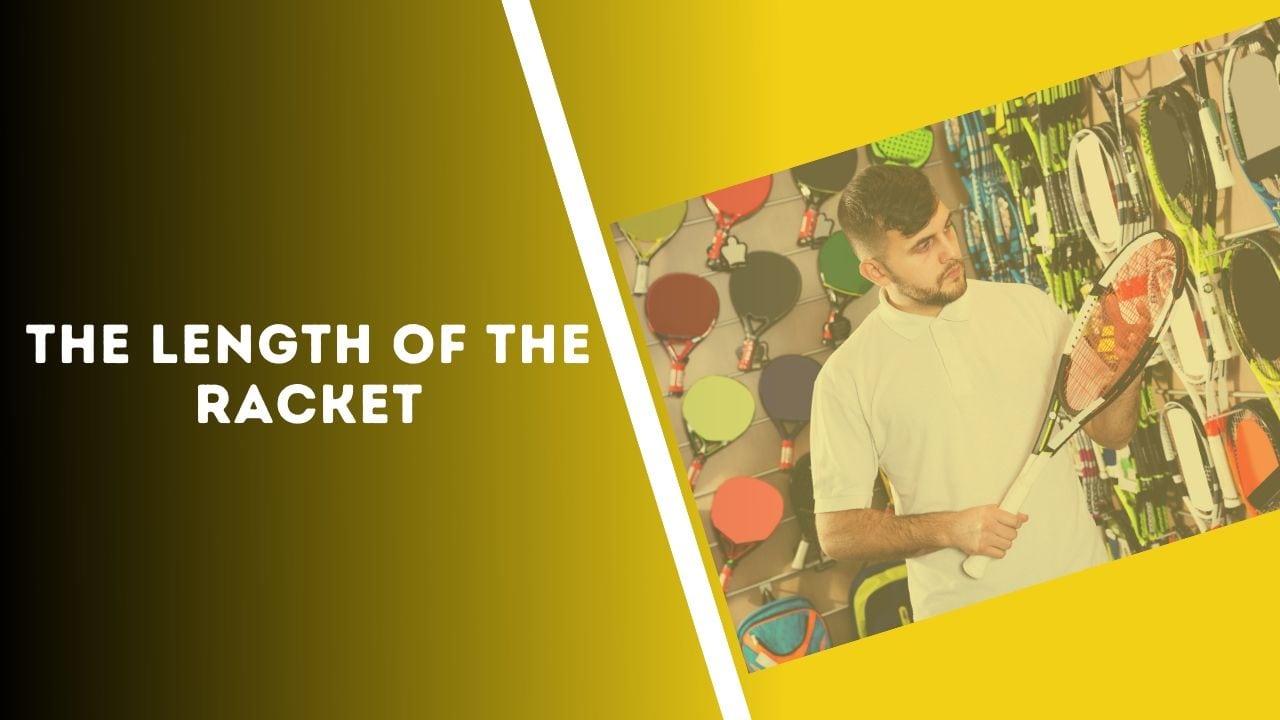
The next quality that you need to know is the length of the racquet, the legal size for tennis racquets is twenty-seven to twenty-nine inches and I think twenty-seven point five is pretty much the standard that you’re going to see out there.
However, as you can guess, if you think about it, a longer racquet means a longer rate length for you. So definitely manufacturers are offering longer racquets and that’s certainly something you might consider.
The tradeoff here is obviously a little longer racquet means a little bit more racquet to keep under control, And it may add a little bit of weight to your racquet, too.
Frankly, I’m not looking for a longer racquet. I think my current racquet is twenty-seven inches and that’s just fine. I don’t need any more racquets out there to try to keep under control. I got enough problems as it is, but that could be something that you’re considering and you should look into it.
Just as with certain manufacturers having models that have various head sizes within the same model of racquet, you can also find within the same model different lengths of racquets.
So if you find something you like, you might be able to get it in a twenty-seven, twenty-eight or twenty-eight point five-inch frame or racquet length. All other things being exactly equal.
the weight and the balance of your racquet.
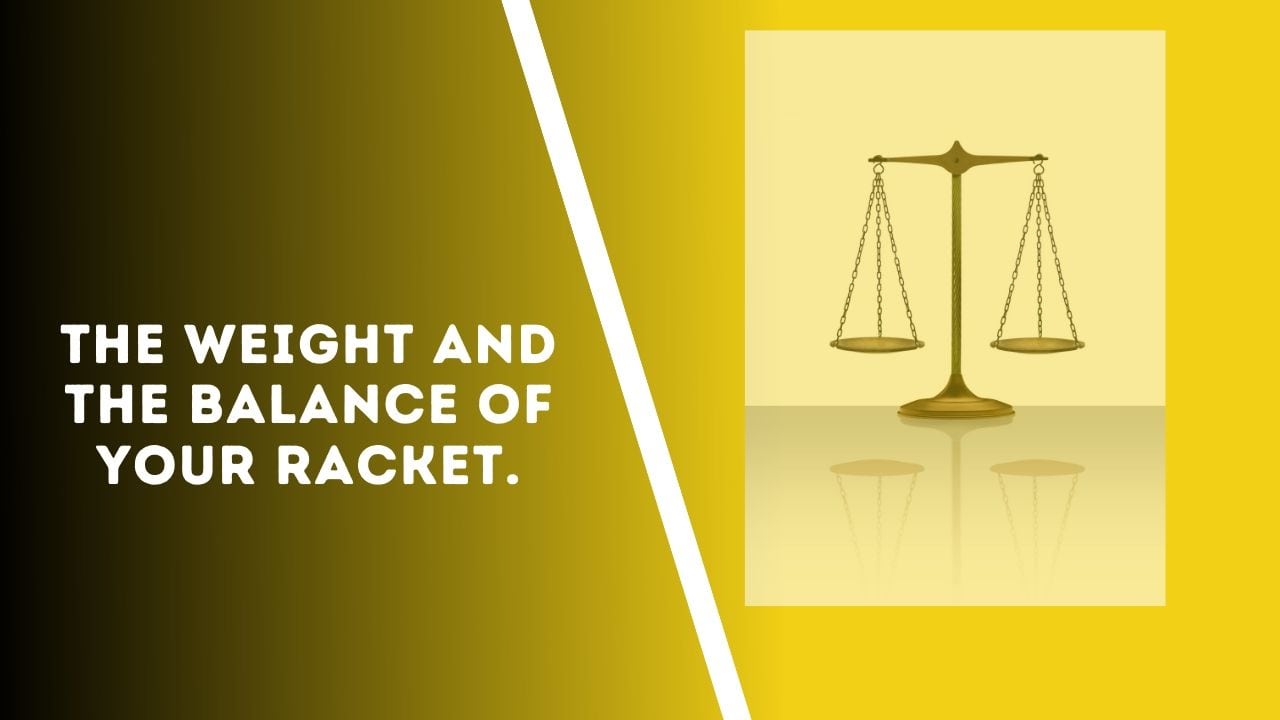
Another issue that you need to be aware of when buying a tennis racquet is, as I just mentioned, the weight and the balance of your racquet.
Honestly, it’s amazing how light racquets are considering their size. And this is one of those things that in the last couple of years, manufacturers have gone better into the technology of creating materials that are obviously strong enough to withstand the rigors of tennis play and yet also remain incredibly light.
So it’s really not that difficult to find a light racquet anymore, that is, like I said, up to one hundred thirty-five square inch head size.
The typical weights of racquet’s range from, somewhere between nine and a half ounces, up to 12 to 13 ounces. And definitely, if you try different people’s racquets, if you pick them up, there are times when you’ll notice a racquet that’s discernibly heavier than the one that you usually play with.
As a woman, or, as someone who’s kind of small and doesn’t have a lot of power or upper body strength, you should definitely look for a lighter racquet.
You don’t want to tire your arm out any more than necessary. And you can certainly maneuver a lighter racquet better and quicker than I can with a heavier racquet, and if you can move the racquet quicker, that will help you put more spin on the ball.
The nice thing about a heavier racquet is it’s going to help you add more power to the ball. And this is where the concept of balance comes in.
racquets are often described as being completely balanced, being head heavy, or being headlight.
A balanced racquet is where the weight is distributed along with the entire frame of the racquet, it’s balanced throughout, where a head heavy racquet has the weight more concentrated in the head and the string area of the racquet. And this is done by removing some of the weight from the handle.
You can imagine swinging a hammer and the weight is in the head of the hammer. And you’re going to get a lot of power when you go to hit a nail with that hammer versus swinging, a bar of metal that weighed the same as the whole hammer, but the weight was distributed evenly throughout the bar.
You’re going to get a heavier, more powerful hit with that hammer, with the metal-head, than you are with the bar of metal that has the weight evenly distributed throughout.
So, again, if you are a beginner, you should choose a more head heavy racquet that will help you add some more power to your serves and strokes.
At the pro level, it’s more common for them to use a more balanced racquet. But I can also say at the pro level, those guys, they’re all customizing their racquets to such an extent with things like lead tape.
So for you as recreational club level players, you’re either looking for a balanced racquet or a head heavy racquet. And I would say that a lot of the reasons why you might seek a racquet with a bigger head size also would be the same reasons why you might look for a head heavy racquet.
Same thing. If you’re looking for more of a control racquet with smaller head size, you might be looking for more of a balanced racquet.
Stiffness of the racquet’s Frame.
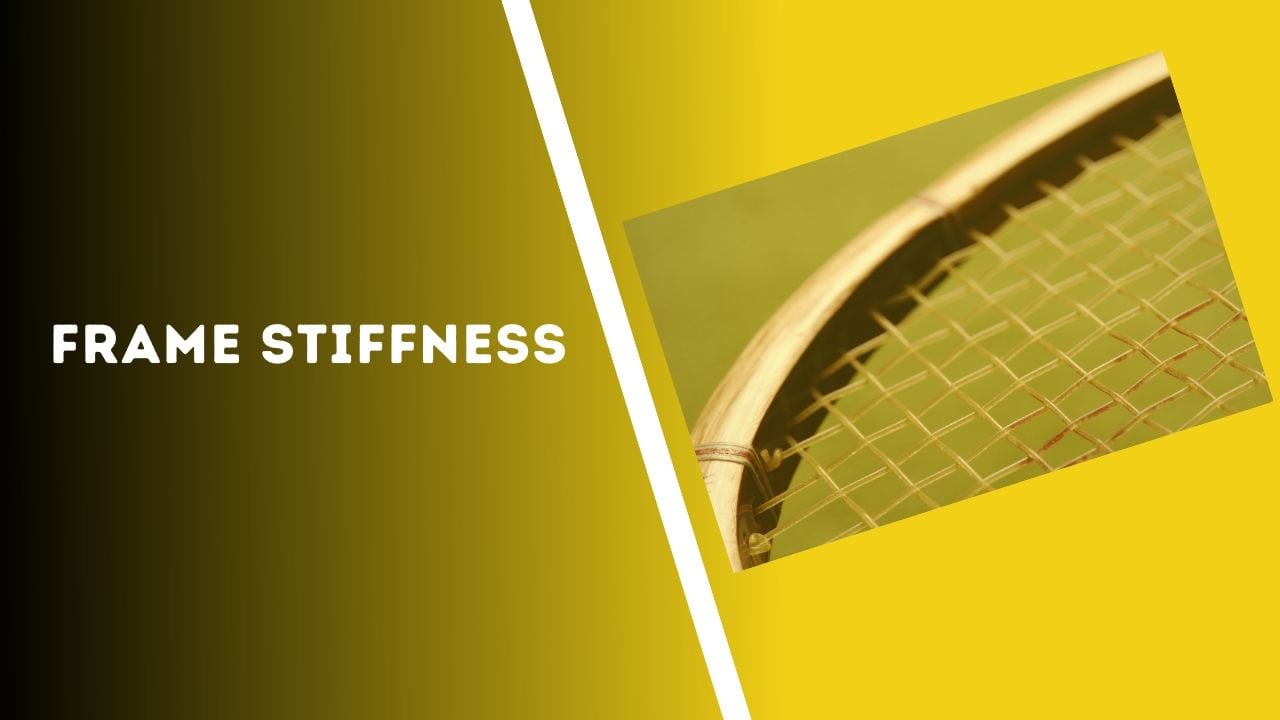
This is, as you might imagine, how stiff or flexible the frame of the racquet is.
So if you can imagine when a tennis ball hits your racquet. If the racquet has some flex to it, some bendability. It’s going to slightly bend and then spring the ball back out like a trampoline.
If the racquet is made of a stiff material, it’s not as flexible. It won’t have as much of this trampoline effect.
Having said that, again, it’s pretty obvious a more flexible racquet can add more power. A stiffer racquet will give you more control.
What I would most be concerned about here is not so much the trampoline effect because I can’t believe I’m ever going to hit a ball that hard, that the racquet is going to flex that much and trampling the ball back out. But it may be more of a comfort factor or even an injury prevention factor.
A flexible racquet may help prevent things like tennis elbow where a stiffer racquet that doesn’t fly cuts on impact, you might feel a little more vibration in your arm. It might transfer that up when the ball hits.
Honestly, that’s not really anything I’m that concerned about. And so I’m not going out of my way to look for a flexible racquet, although I’m guessing the type of racquet I’ve already said I’m looking for, it’s probably going to have a more flexible frame anyways.
The string pattern on your racquet
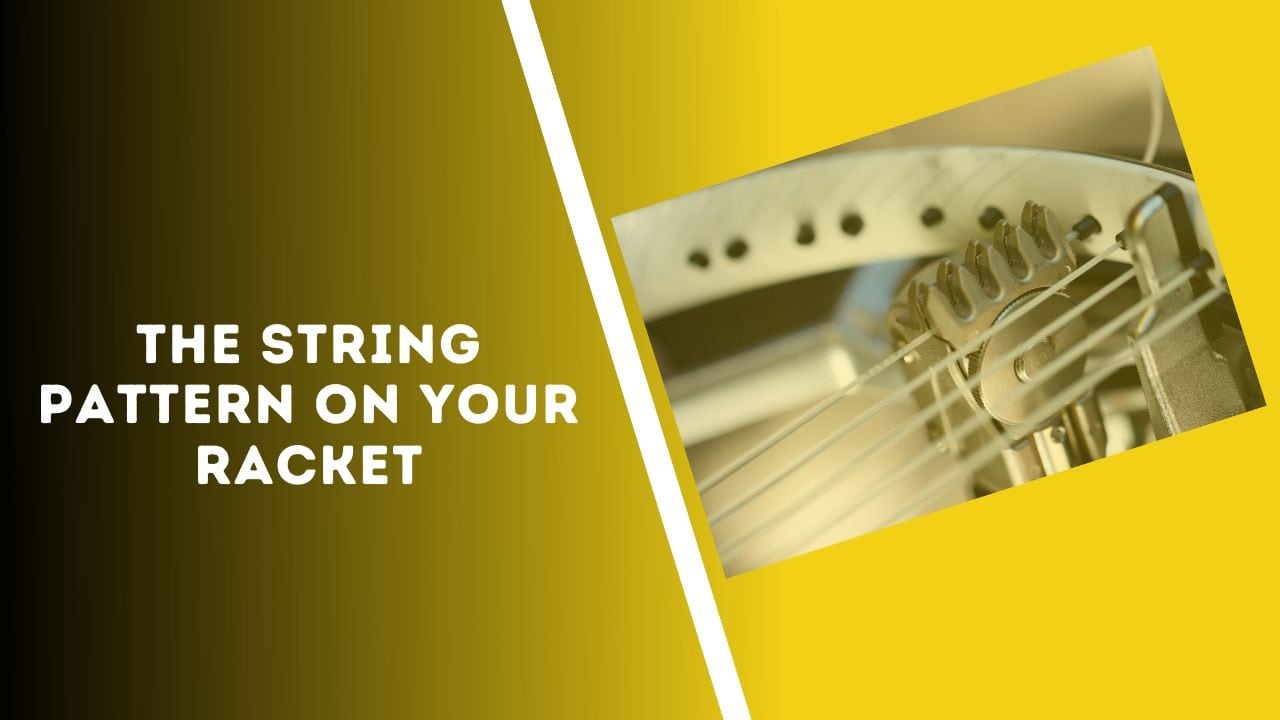
So the fifth and final quality that you need to be aware of is the string pattern on your racquet
A less dense string pattern can provide more power to your shots because of the increase of this potential for a trampoline effect.
It also can provide more spin on your shots, and this is because, as I understand it, the ball can because it deforms the strings more, the strings have more of a bite on the ball or I guess the ball actually is embedding itself into the string bed more.
So there’s more of an opportunity to have the strings brush the ball and add spin.
A more open string pattern can help you add more spin to your shots. Conversely, a denser string pattern where the strings are closer together will result in less spin and more control.
It may also last longer since you’re not putting as much spin and there are more strings there, your string job may last longer.
That may be the quality you’re looking for in your racquet. Common string bed pattern is 16 by 19, I think 16 by 18, although I think I just read somebody had four this year, had a string bed pattern where it was like 18 by 14 or something like that, really wide open.
Summary
As a summary, I’ll just review the things you need to be aware of when you start the process of buying a new racquet.
The three types of racquets, the power racquet, the control racquet, and the twiner racquet. And then the five characteristics within those three types of racquets are head size, length, weight, and balance of the racquet, the stiffness or flex of the frame and the string pattern
Those are the things you need to know to be able to choose the perfect tennis racquet for you.

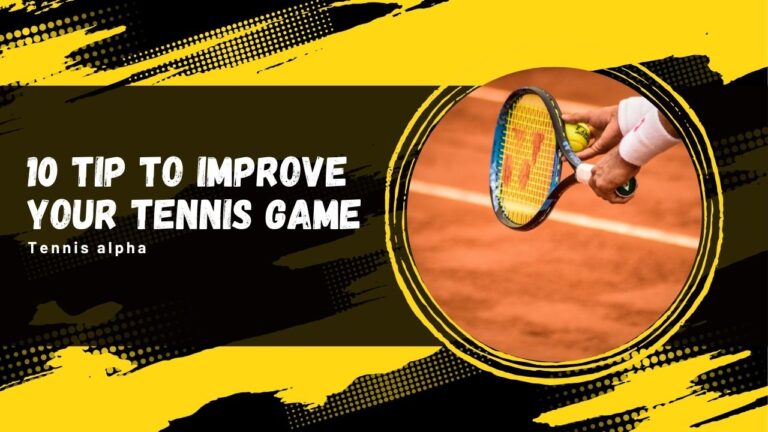


Pingback: Babolat Pure Strike 100 Racquet Full Review 2020: 16x19 Vs 18x20 - Tennis Alpha